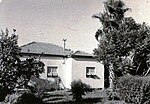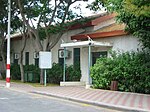Hevel Modi'in Regional Council
Central District (Israel)Hevel Modi'in Regional CouncilRegional councils in Israel

Hevel Modi'in Regional Council (Hebrew: מועצה אזורית חבל מודיעין, Mo'atza Azorit Hevel Modi'in, lit. Modi'in Region Regional Council) is a regional council in central Israel. It was founded in 1950 and covers an area from Petah Tikva to Modi'in. The council borders Drom HaSharon Regional Council, El'ad and Rosh HaAyin in the north Mateh Binyamin Regional Council in the east Gezer Regional Council and Modi'in-Maccabim-Re'ut in the south Drom HaSharon, Lod Valley Regional Council, Lod and Ramle in the west.The head rabbi of the regional council is Rabbi Eliav Meir who is also the head rabbi of Gimzo.
Excerpt from the Wikipedia article Hevel Modi'in Regional Council (License: CC BY-SA 3.0, Authors, Images).Hevel Modi'in Regional Council
Yarden, Hevel Modiin Regional Council
Geographical coordinates (GPS) Address Nearby Places Show on map
Geographical coordinates (GPS)
| Latitude | Longitude |
|---|---|
| N 32.05 ° | E 34.916666666667 ° |
Address
ממלכתי דתי מודיעים
Yarden
4973353 Hevel Modiin Regional Council
Center District, Israel
Open on Google Maps








